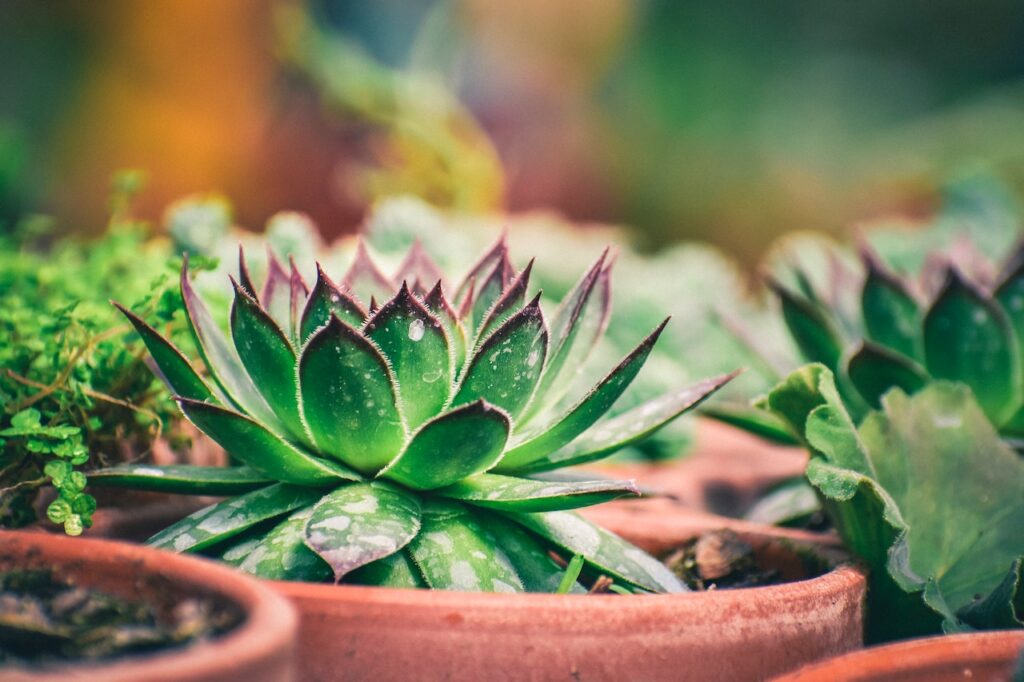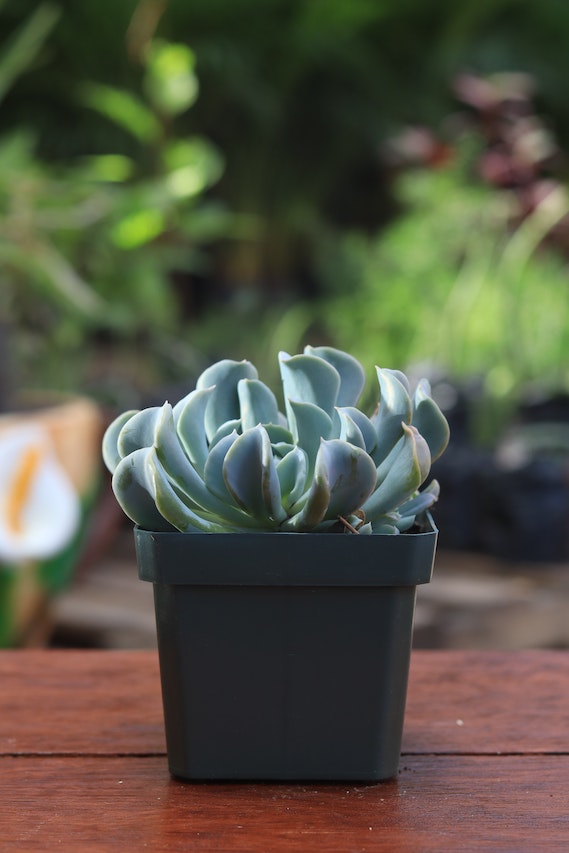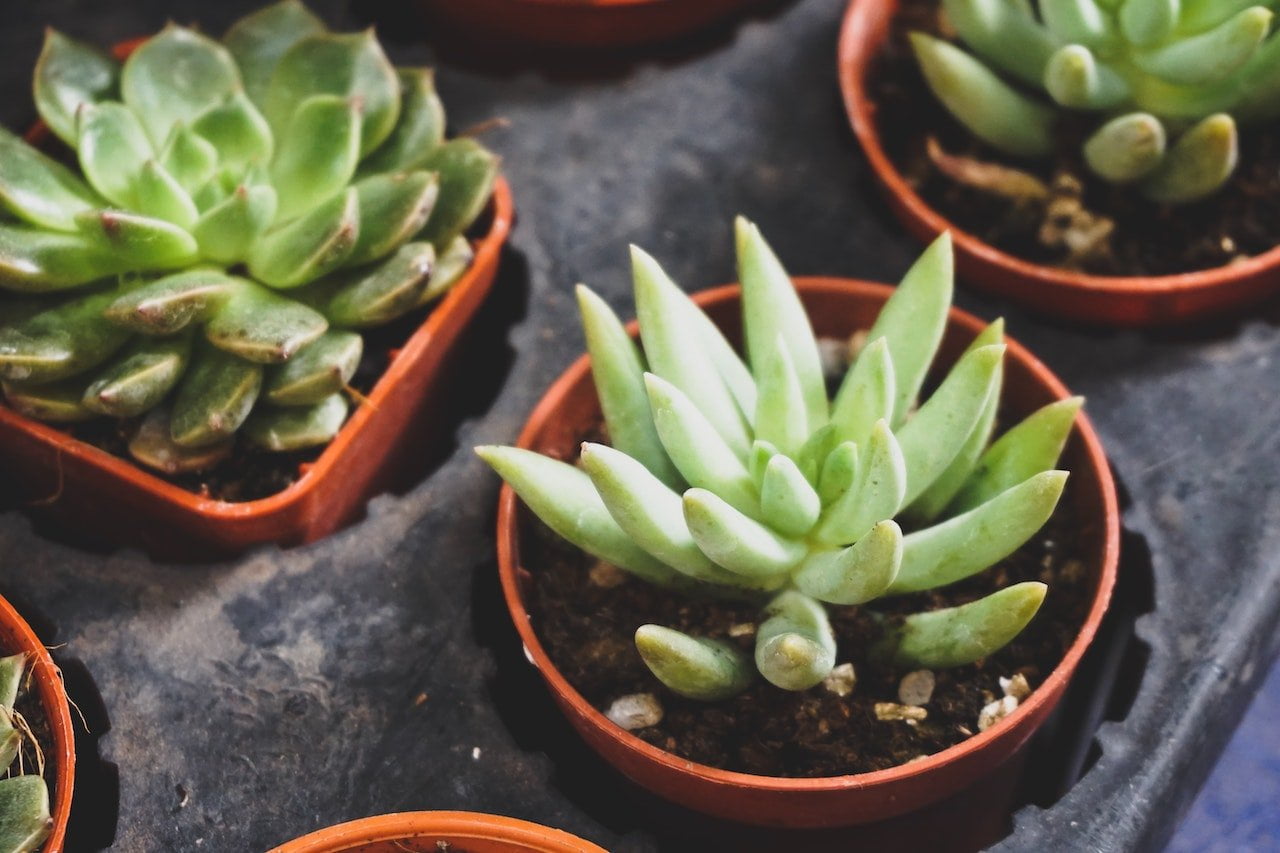Beautiful Plants For Your Interior

11 Essential Tips on How to Care for Succulents in a Pot
When it comes to cultivating a lush and vibrant garden, caring for succulents is an essential skill that every plant enthusiast should master. Succulents, with their unique ability to store water in their thick leaves, require specific attention and care to thrive. Whether you’re a seasoned gardener or a beginner, understanding the fundamental principles of care for succulents is crucial for their health and longevity.
In this comprehensive guide, we will explore the key aspects of caring for succulents, providing you with valuable tips and insights to ensure your succulents flourish in any pot or garden setting.
What are succulents?

Succulents are a unique group of plants characterized by their ability to store water in their leaves, stems, or roots. These water-storing tissues allow them to survive in arid environments with limited rainfall or water availability. Succulents come in a wide range of shapes, sizes, and colors, making them popular among gardeners and plant enthusiasts.
One of the key features of succulents is their fleshy leaves or stems, which have adapted to retain water for extended periods. This adaptation helps them endure drought and thrive in dry conditions. Some well-known succulents include Aloe vera, Echeveria, Jade plant, and various types of cacti.
Succulents have gained popularity in recent years due to their low maintenance requirements and unique aesthetic appeal. They can be grown both indoors and outdoors, depending on the species and climate. They typically prefer well-draining soil, ample sunlight, and infrequent watering to prevent overwatering and root rot.
What are the benefits of succulent plants?

Succulents offer several benefits, making them a popular choice among plant enthusiasts. Here are some of the advantages of having succulents:
1. Low water requirements
Succulents have adapted to store water in their leaves, stems, or roots, enabling them to survive in arid environments. Their water-storing abilities make them highly drought-tolerant and allow for infrequent watering, reducing the need for constant maintenance.
2. Low maintenance
Succulents are known for being low-maintenance plants. They typically require less attention compared to many other types of plants. They can tolerate neglect and can thrive even with minimal care, making them ideal for individuals with busy lifestyles or those who are new to gardening.
3. Versatility
Succulents come in various shapes, sizes, and colors, offering a wide range of options to suit different preferences and design styles. They can be used as focal points in gardens, arranged in containers or terrariums, or even incorporated into vertical gardens or living walls.
4. Indoor and outdoor suitability
Succulents can be grown both indoors and outdoors, depending on the species and climate. They can thrive as indoor houseplants, adding a touch of greenery to homes and offices. Outdoors, they can be used in landscapes, rock gardens, or as ground cover.

5. Air purification
Like many other plants, succulents contribute to air purification by absorbing carbon dioxide and releasing oxygen. This can help improve indoor air quality, creating a healthier living environment.
6. Propagation ease
Succulents are often easy to propagate, allowing you to expand your collection without needing to purchase new plants. Many species can be propagated from leaves, cuttings, or offsets, making them a cost-effective option for plant propagation.
7. Therapeutic benefits
Gardening and taking care of plants, including succulents, can have a positive impact on mental well-being. The act of nurturing plants, observing their growth, and engaging with nature can promote relaxation, stress reduction, and a sense of satisfaction.
How to care for succulents in a pot?

Succulents are stunning and low-maintenance plants that have gained immense popularity among gardeners and indoor plant enthusiasts. Their unique ability to store water in their thick leaves makes them perfect for potted arrangements. However, to ensure their health and longevity, it’s essential to provide them with proper care. Here are 11 essential tips on how to care for succulents in a pot, allowing you to enjoy these resilient beauties in your home or garden.
-
Choose the Right Pot and Soil
Selecting the appropriate pot and soil is crucial for succulent growth. Opt for well-draining pots with drainage holes, as excess water retention can lead to root rot. Terra cotta and ceramic pots are excellent choices as they allow for air circulation. When it comes to soil, use a well-draining mix specifically formulated for succulents, or create your own by combining coarse sand, perlite, and potting soil in a 1:1:2 ratio.
-
Sunlight is Essential
Succulents thrive in bright, indirect sunlight. Place your potted succulents near a south or west-facing window where they can receive at least 4-6 hours of sunlight per day. However, be cautious of exposing them to intense, direct sunlight for prolonged periods, as this can scorch their leaves.
-
Water Sparingly but Thoroughly
One of the biggest mistakes in succulent care is overwatering. These drought-resistant plants prefer infrequent but thorough watering. Allow the soil to dry out completely before watering again. A good rule of thumb is to water them once every 7-10 days during the growing season, and even less in winter when their growth slows down.
-
Beware of Temperature Extremes
Succulents are adaptable to various temperatures, but extreme conditions can harm them. Protect them from frost and freezing temperatures during winter, as most succulents are not frost-resistant. Similarly, avoid placing them in excessively hot or humid locations.
-
Implement the Soak and Dry Method
The soak-and-dry method is an efficient way to water your potted succulents. When it’s time to water, soak the soil thoroughly until water drains from the bottom. Allow the excess water to escape completely and avoid leaving your succulents sitting in standing water.
-
Fertilize Sparingly
Succulents do not require heavy feeding like other plants. Use a balanced, diluted liquid fertilizer once every 4-6 weeks during the growing season (spring and summer). Avoid fertilizing during winter when the plants are dormant.
-
Propagation for New Growth
Succulents are easy to propagate, making it an exciting way to expand your collection or share them with friends. You can propagate succulents through leaf cuttings, stem cuttings, or by separating offsets from the parent plant.
-
Pruning for Healthier Growth
Pruning is essential to maintain the shape and health of your succulents. Remove dead or rotting leaves, stems, and flowers regularly to prevent the spread of diseases and pests. Pruning also encourages new growth and keeps the plant looking neat.
-
Protect from Pests
Succulents are generally resistant to pests, but they can occasionally attract spider mites, mealybugs, or aphids. Inspect your plants regularly for any signs of infestations and treat them promptly with neem oil or insecticidal soap.
-
Repot When Necessary
As your succulents grow, they may outgrow their current pots. Repot them in slightly larger containers when you notice their roots become cramped. Spring is the ideal time for repotting, as the plants are entering their active growth phase.
-
Learn from Experience
Observation is key when it comes to succulent care. Each succulent has its own preferences and may require slightly different care. Monitor your plants closely, learn from their responses to light, water, and temperature, and adjust your care routine accordingly.
How to care for succulents outdoors in pots?

Caring for succulents outdoors in pots is relatively easy, but it’s important to pay attention to some key factors to ensure their health and thriving. Here are some essential tips to care for your succulents in outdoor pots:
1. Sunlight
Succulents love sunlight, so place your pots in an area where they receive at least 4-6 hours of direct sunlight per day. In hotter regions, some afternoon shade might be beneficial to prevent scorching.
2. Drainage
Proper drainage is crucial for succulents to prevent root rot. Make sure your pots have drainage holes at the bottom to allow excess water to escape. Use a well-draining potting mix specifically formulated for succulents or mix regular potting soil with sand and perlite.
3. Watering
Succulents are drought-tolerant plants and prefer infrequent but deep watering. Allow the soil to dry out completely between waterings. In hot weather, you may need to water once a week or less. In cooler months, reduce watering frequency.
4. Avoid Overwatering
One of the most common mistakes with succulents is overwatering. It’s better to underwater than to overwater. Excess water can lead to root rot and other problems. Always check the soil moisture level before watering.
5. Watering Technique
When watering, thoroughly soak the soil until water drains out of the bottom of the pot. This helps to flush out any accumulated salts and ensures the entire root system gets watered.
6. Fertilization
Succulents are not heavy feeders, and too much fertilizer can be harmful. During the growing season (spring and summer), you can use a balanced, diluted liquid fertilizer once a month or every two months. Avoid fertilizing during the dormant season (fall and winter).
7. Pest and Disease Control
Keep an eye out for common pests like mealybugs or aphids. If you notice any infestations, treat the affected plants with insecticidal soap or neem oil according to the instructions on the product.
8. Repotting
As succulents grow, they may outgrow their pots. Repot them into slightly larger containers when needed, preferably during their active growing season.

Succulents Planters Pots
ZOUTOG Succulent Pots, White Mini 3.15 inch Ceramic Flower Planter Pot with Bamboo Tray, Pack of 6 – Plants Not Included

9. Seasonal Changes
Succulents may have different needs during different seasons. For example, they tend to be more dormant in winter, so watering should be reduced.
10. Pruning and Propagation
To maintain a compact and tidy appearance, you can trim off any dead or leggy growth. You can also propagate your succulents by taking stem or leaf cuttings and allowing them to dry before planting in well-draining soil.
11. Temperature
Most succulents can tolerate a wide range of temperatures, but if you live in an area with extreme cold, it’s best to bring your pots indoors or provide protection during frost or freezing conditions.
How to care for succulents indoors during winter?

Caring for succulents indoors during winter requires some adjustments to accommodate the lower light levels and colder temperatures typical of the season. Here are some essential tips to keep your succulents healthy during winter:
1. Light
Succulents still need plenty of light during the winter, even though the sunlight may be weaker than during other seasons. Place your succulents near a south-facing window where they can receive bright, indirect light for at least 6 hours a day. If natural light is insufficient, consider using a grow light specifically designed for succulents.
2. Temperature
Succulents are generally tolerant of cooler temperatures, but most prefer to be kept between 60°F to 75°F (15°C to 24°C) during the day and slightly cooler at night. Avoid placing them near drafty windows or doors where they might experience temperature fluctuations.
3. Watering
During winter, succulents enter a period of dormancy, and their water requirements decrease. Allow the top inch (2.5 cm) of the soil to dry out completely between waterings. When watering, do it deeply but infrequently to prevent root rot. Be cautious not to let them sit in standing water.
4. Humidity
Succulents prefer low humidity levels, which can be challenging to achieve in some homes during winter when indoor heating tends to dry the air. To combat this, you can place a tray of water near your plants or use a humidifier to maintain a moderate level of humidity.
5. Potting Mix
Make sure your succulents are potted in well-draining soil. A mix specifically formulated for cacti and succulents, or a combination of potting soil, sand, and perlite, works well. Good drainage is essential to prevent waterlogged roots.

Succulents Potting Soil Mix
Premium Succulent and Cactus Potting Soil Mix for Plants and Urban Gardening. Promote Root Growth and Soil Health, Fast Draining with Added Nutrients, Premium Horticultural Perlite for Plants
6. Pot Size
Avoid transplanting your succulents into significantly larger pots during winter. The larger the pot, the more soil there is to retain moisture, which could lead to overwatering. Only repot if the current pot is too small and the roots are becoming crowded.

7. Reduce Fertilization
During winter, succulents are not actively growing, so they do not need as much fertilizer. It’s best to avoid fertilizing them during this time, as over-fertilization can harm the plants.
8. Pest Control
Be on the lookout for pests, such as mealybugs or spider mites, as they can still be a problem during winter when conditions indoors may encourage their presence. If you spot any pests, isolate the affected plants and treat them promptly.
9. Air Circulation
Proper air circulation is crucial to prevent stagnant air around your succulents. Avoid overcrowding them and ensure there’s enough space between plants to allow air to circulate freely.
10. Monitor the Plants
Keep a close eye on your succulents throughout the winter. Signs of stress, such as wrinkling or dropping leaves, could indicate that adjustments are needed in their care routine.
People also ask
-
Do succulents grow from seeds?
Yes, succulents can be grown from seeds. Sow them on well-draining soil, provide moisture, and place them in a warm, brightly lit location for germination.
-
How to water succulents in pots?
To water succulents in pots, wait for the soil to dry completely between waterings. Then, thoroughly saturate the soil until water drains from the pot’s bottom. Empty any excess water to prevent root rot. Water sparingly but deeply.
-
How much water do succulents need?
Succulents need minimal water due to their water-storing ability. Water sparingly, letting the soil dry completely between waterings. Adjust the watering frequency based on climate and individual plant needs to prevent overwatering and root rot.
-
What size succulent pots are best?
When choosing pots for succulents, select sizes that allow for root growth. A general guideline is to choose pots 1-2 inches larger in diameter than the current root size. Ensure the pots have drainage holes to prevent water buildup.
-
Can I keep succulents indoors?
Yes, many succulent varieties can thrive indoors, provided they receive enough sunlight and proper care. Place them near a sunny window or provide supplemental grow lights if natural light is limited.
-
Why are my succulent leaves turning yellow?
Yellowing leaves may be a sign of overwatering, root rot, or too much sunlight. Check the soil moisture and adjust your watering routine accordingly. Also, ensure they are not exposed to intense, direct sunlight for extended periods.
-
When should I repot my succulents?
As succulents grow, they may outgrow their pots. Repot them in slightly larger containers when you notice their roots become cramped. Spring is the ideal time for repotting as they enter their active growth phase.
-
Do succulents require fertilization?
Succulents do not need heavy feeding. Use a balanced, diluted liquid fertilizer once every 4-6 weeks during the growing season (spring and summer). Avoid fertilizing during winter when they are dormant.
-
How do I propagate my succulents?
Succulents can be easily propagated through leaf cuttings, stem cuttings, or by separating offsets from the parent plant. Follow proper techniques and provide them with the right environment to encourage successful propagation.
-
How can I prevent pests from attacking my succulents?
While succulents are generally resistant to pests, they can attract spider mites, mealybugs, or aphids. Inspect your plants regularly and treat any infestations promptly with neem oil or insecticidal soap.
Wrap up on How to Care for Succulents
In conclusion, proper care for succulents is the foundation for their well-being and beauty. By following the essential tips and techniques discussed in this comprehensive guide, you can create an environment that supports optimal growth and health for your succulents. From choosing the right pot and soil to providing adequate sunlight, watering sparingly, and protecting them from extreme temperatures, each aspect of care plays a vital role in their overall success. So, whether you’re a dedicated succulent lover or embarking on your journey with these fascinating plants, remember that a little attention and care can go a long way in nurturing your succulents and enjoying their captivating presence for years to come.







